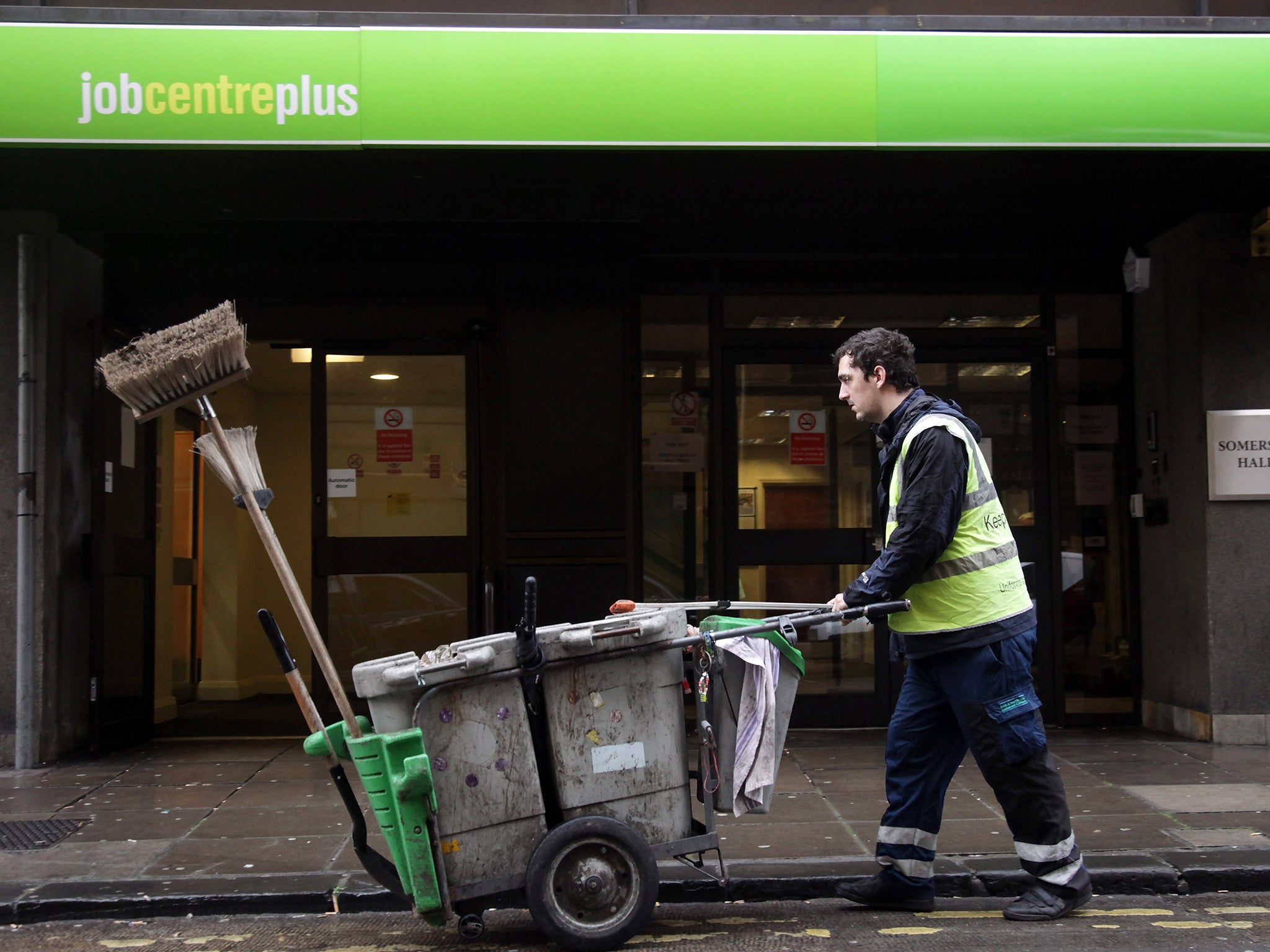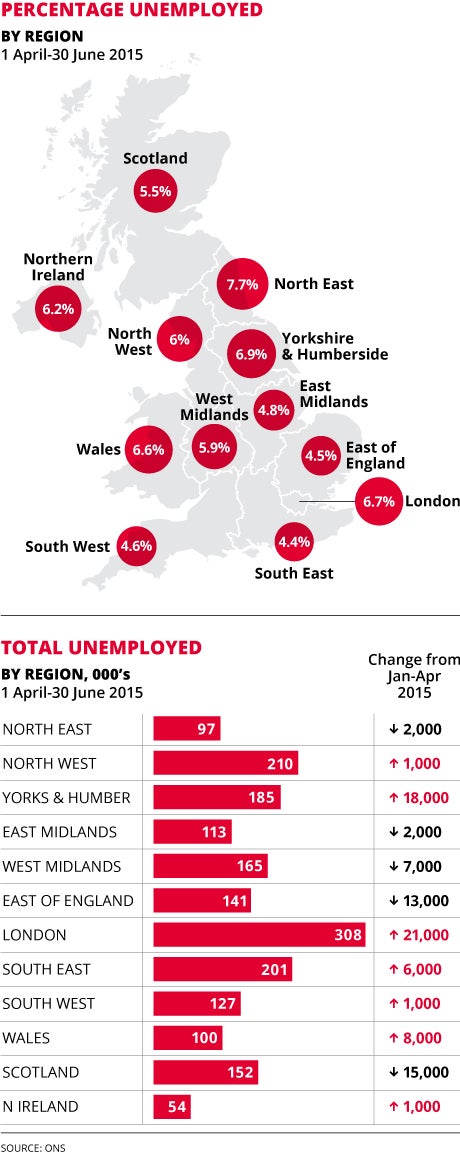The two graphs that reveal the most difficult places to get a job in the UK
The rate of unemployment is highest in the North East, while the South East enjoys the lowest jobless rate in the country

The hardest place to find a job in the UK is in the North East, according to official figures released today.
The Office for National Statistics found that unemployment in the UK as a whole rose for the first time in two years in the second quarter of 2015.
Comparing the unemployment region-by-region shows that six of the 11 areas of the UK suffered an upturn in unemployment and reveal the places in the UK where it is hardest – and easiest – to find a job.

After the North East, which has an unemployment rate of 7.7 per cent, the next hardest region to find a job is Yorkshire & Humberside, followed by London, where there is a jobless rate of 6.7 per cent despite it boasting by far the fastest job creation rate in the UK.
The capital saw the highest increase in the number of unemployed people, but that is unsurprising as it is by far the largest populated area in the UK, with a total of 308,000 jobless.
Meanwhile the easiest place to find a job is in the South East, going by the ONS stats, followed by the South West and the East Midlands.
For the UK as a whole the jobless rate was 5.6 per cent for the three months between March and May, a slight increase on the 5.5% seen in the first three months of the year. It meant the total number of people unemployed reached 1.85 million in May, an increase of 15,000.
However the first rise in unemployment since early 2013 was matched by the fastest growth in wages for five years - with those in work enjoying an annual boost of 3.2 per cent in their earnings in the second quarter of 2015.
Join our commenting forum
Join thought-provoking conversations, follow other Independent readers and see their replies
Comments